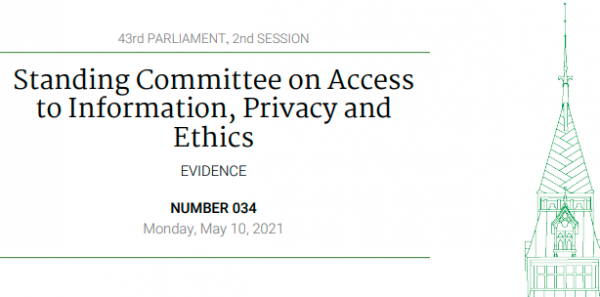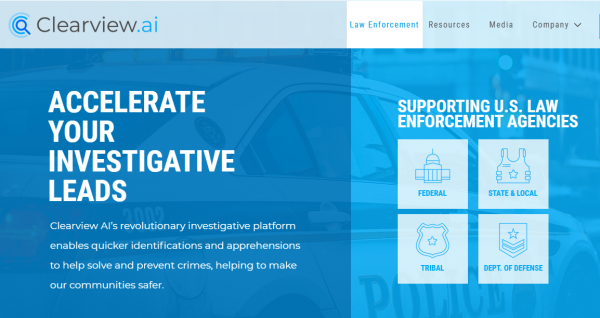
This was from a May 10, 2021 Parliamentary Committee Meeting on Bill C-11, and facial recognition. In some sense this hearing is academic, as Parliament was was dissolved over the summer. Nevertheless, it’s entirely possible that it will be brought back once the new session starts.
Also, as this so-called “pandemic” drags on, and resistance builds, will facial recognition become the norm at protests? Will this be a way to identify and target peaceful demonstrators?
Another point: while law enforcement or Canadian intelligence may be barred from using this facial recognition, will they simply outsource it to private companies? A possible argument would be that the police aren’t actually violating privacy laws, but just taking advantage of others that do.

THE WORLD’S LARGEST FACIAL NETWORK
Clearview AI provides law enforcement agencies with greater insight and lead generation through the use of our investigative platform. Our platform includes the largest known database of 10+ billion facial images sourced from public-only web sources, including news media, mugshot websites, public social media, and many other open sources.
.
Agencies that use our platform can expect to receive high-quality leads with fewer resources expended. These leads, when supported by other evidence, can help accurately and rapidly identify suspects, persons of interest, and victims to help solve and prevent crimes.
HOW DOES CLEARVIEW AI’S FACIAL SEARCH TECHNOLOGY WORK?
Clearview AI provides law enforcement agencies with investigative opportunities through the use of our research tool. Our platform includes the largest known database of 10+ billion facial images sourced from public-only web sources, including news media, mugshot websites, public social media, and many other open sources.
Clearview is called out by name in the House of Commons meeting. It’s quite interesting. Remember those pictures with your college buddies from 10-15 years ago on Facebook? Guess what, those may have been copied, real names attached, and used as reference points in the near future.
Of course, some private companies have already been using this type of technology for years. It’s not exactly revolutionary at this point. Last October, the story about Cadillac Fairview using this without people’s knowledge or consent in Ontario was broken
Anyhow, this story will need to be followed up on. In the meantime, it’s pretty chilling to see how accepting and tolerant public officials have become about its use.
(1) https://www.ourcommons.ca/DocumentViewer/en/43-2/ETHI/meeting-34/evidence
(2) May 10 Facial Recognition Parliamentary Hearing
(3) https://parlvu.parl.gc.ca/Harmony/en/PowerBrowser/PowerBrowserV2/20210510/-1/35421?Language=English&Stream=Video
(4) https://www.ourcommons.ca/Content/Committee/432/ETHI/Evidence/EV11321905/ETHIEV34-E.PDF
(5) https://www.clearview.ai
(6) https://www.clearview.ai/law-enforcement
(7) https://www.thestar.com/news/gta/2020/10/29/cadillac-fairview-broke-privacy-laws-by-using-facial-recognition-technology-at-malls-investigators-conclude.html

The reason for the photos on our driver’s licenses is to supply scandal-ridden Serco’s facial recognition software with the data they need to build this technology. My understanding is that it was they who first developed this technology.
They’ve controlled the driver’s licensing system in Ontario for at least 2 decades, and likely in other provinces as well, where they take 70% of the licensing fee and your image (for free). They also use a fraudulent and useless ‘cognitive’ driver test on seniors as a means of separating seniors from their money, their vehicles and eventually forcing them into big cities.
There’s a song out there called “the witness” by a band called “crazy P” – this is the subject matter.
Related to this is the following now expired Federal Government tender. https://buyandsell.gc.ca/procurement-data/tender-notice/PW-21-00958775